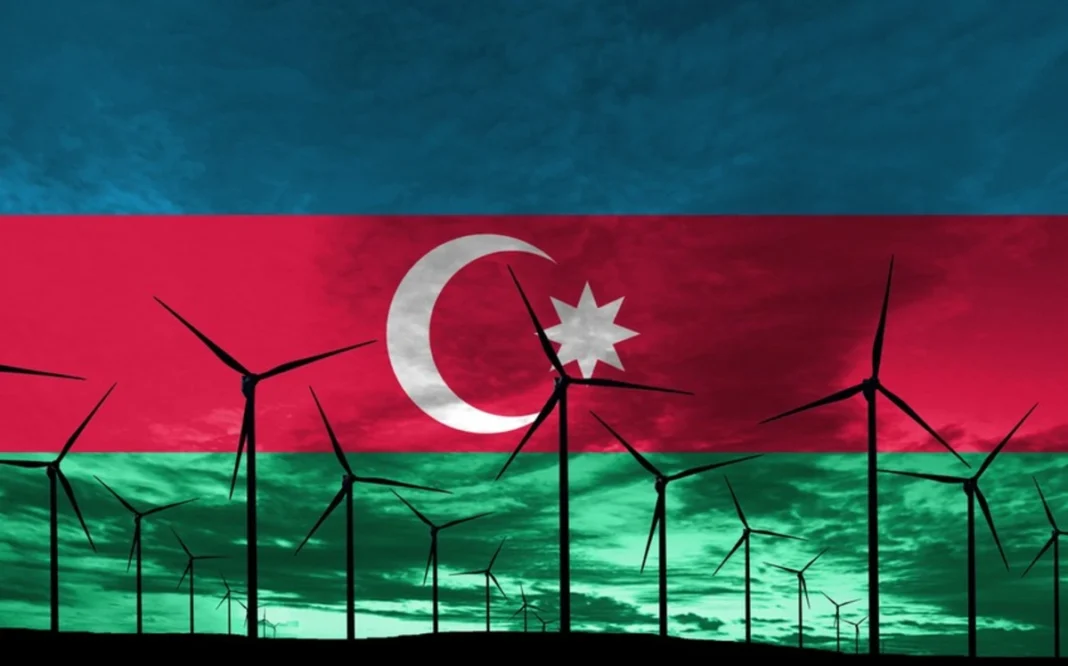As Azerbaijan transitions from oil dependency to a diversified portfolio of renewable energy—including offshore wind and hydrogen—it is not only redefining its own economic future but also opening new strategic pathways for NATO in the realm of energy security.
A recent article in The National Interest highlights how Baku’s green energy strategy can help reshape regional dynamics and reduce Europe’s reliance on Russian energy—a longtime geopolitical vulnerability.
Azerbaijan’s Green Energy Strategy
While modern energy agreements often go under the radar, their strategic value cannot be overstated. One of the most significant recent examples is the 3.5 GW offshore wind memorandum signed during COP29 between Azerbaijan’s state oil company SOCAR and two Gulf energy giants—ACWA Power (Saudi Arabia) and Masdar (UAE).
This project aligns with Azerbaijan’s national goal to source 30% of its electricity from renewables by 2030, with at least 4 GW earmarked for export.
A Global Offshore Wind Powerhouse
According to the Global Wind Energy Council, Azerbaijan ranks among the top four countries globally—alongside Australia, Sri Lanka, and Turkey—in terms of offshore wind potential. The Azerbaijani sector of the Caspian Sea alone holds an estimated 157 GW capacity.
Such capacity not only supports domestic decarbonization goals but could also serve as a key export resource to European markets eager to diversify away from Russian supplies.
Hydrogen: The Next Frontier
SOCAR is preparing for blue hydrogen production using natural gas, while the European Bank for Reconstruction and Development is backing green hydrogen projects. These initiatives feed directly into the EU’s strategic plan to meet 10% of its energy demand with hydrogen by 2050.
Toward a “Southern Green Corridor”
The emerging Southern Green Corridor is being framed as a modern counterpart to the Southern Gas Corridor, a project supported by NATO and Western partners in the early 2000s. The new version envisions not fossil fuel pipelines, but a renewable energy supply chain connecting the Caspian to Europe.
This initiative could become a cornerstone of Europe’s long-term energy security strategy—especially as the continent continues efforts to reduce dependency on Russian energy.
New Priorities for NATO
As offshore wind farms and hydrogen infrastructure become critical to Europe’s energy grid, protecting these assets will become a NATO security imperative. Cyber threats, hybrid warfare, and potential sabotage are no longer limited to pipelines—they now extend to power cables, turbines, and hydrogen hubs.
In this context, Azerbaijan’s transition becomes more than an economic shift—it is a strategic opportunity for NATO to engage with a key regional partner in building resilient, future-facing energy systems.
Conclusion
Azerbaijan’s green energy push is not just a national success story—it’s a geopolitical development with wide-reaching implications. For NATO, it offers a chance to deepen cooperation with Baku, bolster regional stability, and counter Russian influence through sustainable energy integration.
As the energy map of Eurasia evolves, Azerbaijan is positioning itself not at the periphery, but at the very center of tomorrow’s energy security architecture.




